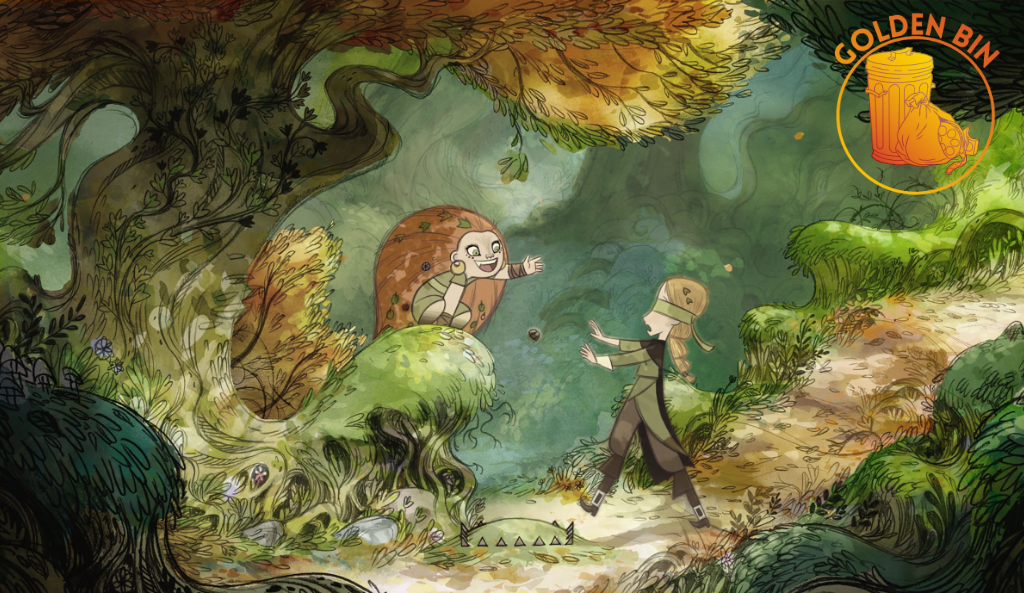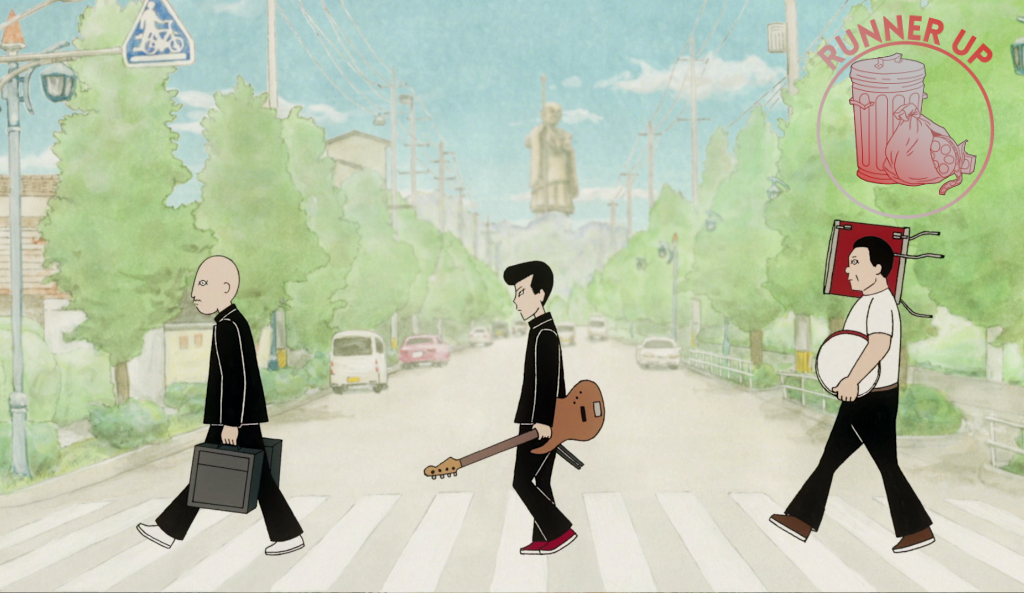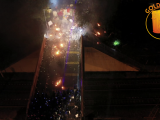
The Golden Bin Awards: Best Animated Feature
April 2, 2021Stunning animation and unique plots
In this series based on the Oscars Deathrace series of articles I wrote for The Phoenix News over the last few years, I spotlight my personal picks for this year’s Oscars, as well as some notable snubs.
Part of this article was originally published in the Kelowna Daily Courier under the title “Movie review: Anime movie a backhanded musical celebration“

Winner: Wolfwalkers
Set in Ireland during the time of Oliver Cromwell, Wolfwalkers tells the story of Robin, an English girl whose father is tasked with keeping wolves away from a local town. Not satisfied to simply sit back and watch, Robin tries to help her father, but winds up getting attacked by wolves in the process. But when Robin meets the Wolfwalkers, a mother and daughter who inhabit the bodies of wolves while asleep, she soon learns that the wolves are more than the vicious aggressors the town makes them out to be.
Wolfwalkers is a story about tolerance, and the importance of getting along with others. It’s also a barely-veiled commentary on the brutal occupation of Ireland by the English during the seventeenth century. The distinctly Irish wolfwalkers are doomed from the start, and in the modern-day, there’re no shapeshifting wolf-people left. The audience can draw their own conclusions as to what this means.
The story of Wolfwalkers is communicated through the personal struggles of Robin and wolfwalker Mebh, brilliantly acted by Honor Kneafsey and Eva Whittaker, respectively. Both originally distrusting of each other’s civilizations, Robin and Mebh form a fast friendship as the two learn the truth of Cromwell’s town, the forest, and each other. Sean Bean also appears as Robin’s father and renowned wolf hunter Bill, whose heartwarming character arc has him learning to trust his daughter, even if it means siding with wolves.
The best part of Wolfwalkers are the visuals. Wolfwalkers makes use of heavily expressive animation to show its characters in a way few other animated films do, and no live action film can. At key points, the very environment or framing around characters will change. The animators regularly go beyond shading to altering the very amount to which each frame is finished to draw the audience’s attention to different points. Several frames, though fully coloured, retain the full underlying linework, leaving much of the film looking somewhere between a sketch and a finished product. Taken completely out of context, frames of the film often look unfinished, but strung together, they make for a dynamic animation style unlike anything else releasing today.
With each of their first three movies nominated for an Oscar, Irish studio Cartoon Saloon is a major player when it comes to the Academy Award for Best Animated Feature. Wolfwalkers, the studio’s latest movie, could make history as their first to win.

Runner-Up: On-Gaku: Our Sound
On-Gaku: Our Sound is a unique slice-of-life anime that celebrates rock music of all stripes, subverts animation tropes, and packs in a ridiculous amount of hilarious visual gags, all in a tight 77 minutes.
Unable to fit the stereotype of a high-school delinquent, Kenji (Shintaro Sakamoto) enlists his friends Ota and Asakura to start a rock band. Though the trio starts off with no musical talent, no interest in learning, and less than half a drumset, their “primal” sound catches the attention of the local Folk Music Club, whose leader sees them as potentially a great new progressive rock band. At the same time, a rival gang from another high school takes Kenji’s complete disinterest in delinquent activities like high school raids and gang wars as a personal offense, and plots to end the band.
The plot of On-Gaku never overstays its welcome. For one thing, the movie is very short. At the same time, On-Gaku mostly uses its band-formation story to explore the characters of Kenji, Ota and Asakura. All three are directionless, having been pigeonholed into the role of “high-school delinquent” early on. Kenji, the leader of the three, starts new hobbies often, but rarely sticks with them. For Ota and Asakura, music isn’t something they’re good at, but it lets them meet new people, and they enjoy it. Over the course of the film, the characters go perpetual boredom to being excited about life. It’s not a huge change, but does result in every plot thread having a satisfying resolution.
The film is also chock-full of visual gags, references to progressive rock, and combinations of the two. One notable, Monty Python-esque sequence shows a character being sitting in an environment made up of album covers (including The Who’s Who’s Next and ELP’s Tarkus), before being pushed through the tubular bells from Mike Oldfield’s album of the same name.
On-Gaku’s hand-drawn style is minimalist, but experimental. Anything that doesn’t have to move isn’t animated, with beautiful, detailed paintings making up most of the backgrounds. The rest is animated using rotoscoping techniques, with character designs evocative of Mob Psycho 100 or One Punch Man, but fluid movements that references music videos like that of A-ha’s “Take On Me”.
The style is extremely versatile. Some scenes near the beginning play out like a well-executed low-budget anime. The ending sequence, however, is closer to live-action concert footage.
At times, On-Gaku looks like a pastiche of indie music and traditional animation stereotypes. The main characters can’t play their instruments and are kind of lame, but other characters see them as intimidating thugs and musical geniuses.
But rather than parody, On-Gaku celebrates music and animation. The characters in the film are immensely passionate, and surprisingly three-dimensional (given the runtime). Like Kenji and his gang, there’s much more to On-Gaku than meets the eye.
Honourable Mentions:
The Willoughbys, Trolls: World Tour, Kill It and Leave This Town

